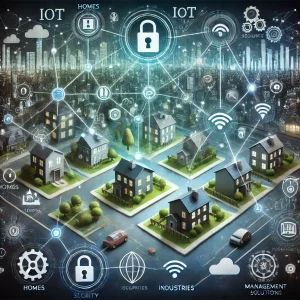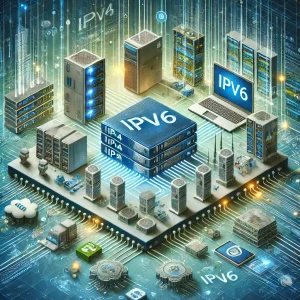
As the Internet of Things (IoT) continues to expand, so do the challenges associated with the networking of these devices. From smart homes to industrial IoT applications, the need for robust, secure, and efficient connectivity is greater than ever. This blog post explores the critical IoT networking challenges—connectivity, security, and management—and offers insights into how they can be addressed.
The Scope of IoT Networking Challenges
IoT devices are becoming ubiquitous, significantly altering how we interact with our environment. However, this rapid expansion introduces several networking challenges that can impact performance and security.
- Connectivity Issues: As millions of devices connect to the internet, the strain on network infrastructure can lead to congestion, increased latency, and reduced bandwidth availability. Ensuring reliable and seamless connectivity in such a dense network environment is a paramount challenge.
- Security Vulnerabilities: IoT devices often lack robust built-in security, making them susceptible to cyberattacks. The diversity and number of devices create a broad attack surface. Security challenges include data privacy issues, unauthorized access, and the potential for device manipulation.
- Management Complexity: The sheer volume of IoT devices generates significant management challenges. Monitoring and maintaining device health, performance, and security across such a broad and diverse network can be daunting.
Addressing Connectivity Challenges
Connectivity is a foundational element of IoT effectiveness. Here’s how connectivity challenges can be addressed:
- Enhanced Network Architectures: Leveraging advanced network solutions like mesh networks and 5G technology can alleviate bandwidth constraints and enhance connectivity.
- Edge Computing: Processing data closer to the source can reduce latency and bandwidth use, enabling more efficient data handling and quicker response times.
Tackling Security Issues
Security is a critical concern in IoT networks due to the potential risks associated with data breaches and network intrusions.
- Advanced Encryption: Implementing robust encryption methods for data transmission can secure communication channels between IoT devices and networks.
- Regular Updates and Patches: Continuously updating and patching devices to guard against known vulnerabilities is crucial for maintaining network integrity.
Simplifying IoT Management
Effective management is vital for maintaining the health and performance of IoT networks.
- IoT Platforms: Utilizing specialized IoT management platforms can help streamline the complexity associated with large-scale device networks. These platforms can provide tools for automation, monitoring, and managing device deployments.
- AI and Machine Learning: AI can predict potential network failures and automate routine tasks, reducing the burden on network administrators and enhancing system reliability.
Future Directions in IoT Networking
As technology evolves, so will the strategies to address IoT networking challenges. Future innovations may include more integrated AI operations, advanced decentralized networks, and newer protocols that address the unique needs of IoT environments.
Conclusion
IoT networking challenges pose significant hurdles but also present opportunities for innovation and improvement in network technology. By addressing connectivity, security, and management challenges effectively, the potential of IoT can be fully realized, leading to smarter and more efficient connected environments.
This comprehensive discussion highlights the pressing IoT networking challenges and the various strategies to address them, ensuring the reader is well-informed about the current landscape and future developments in IoT networking.





